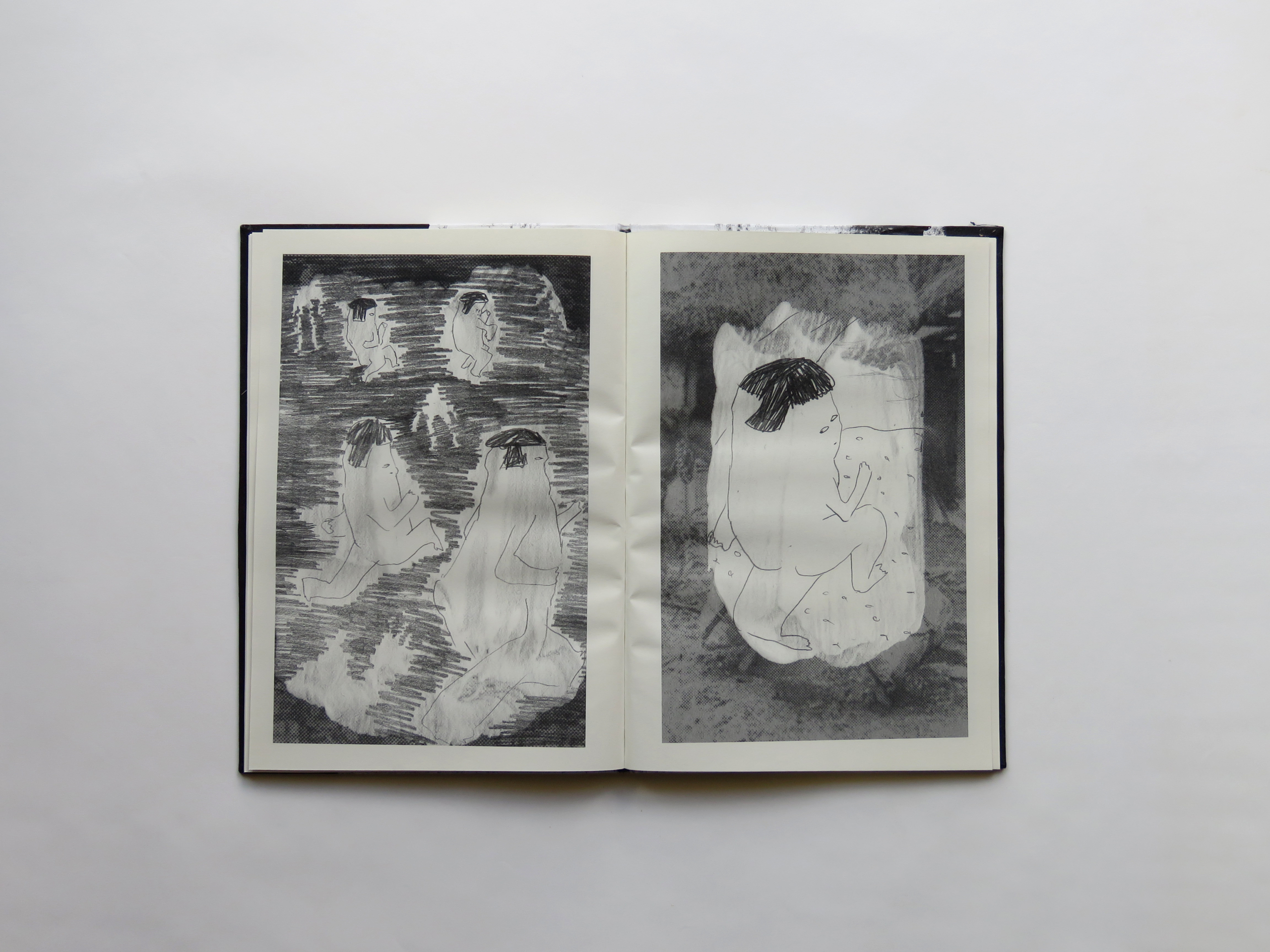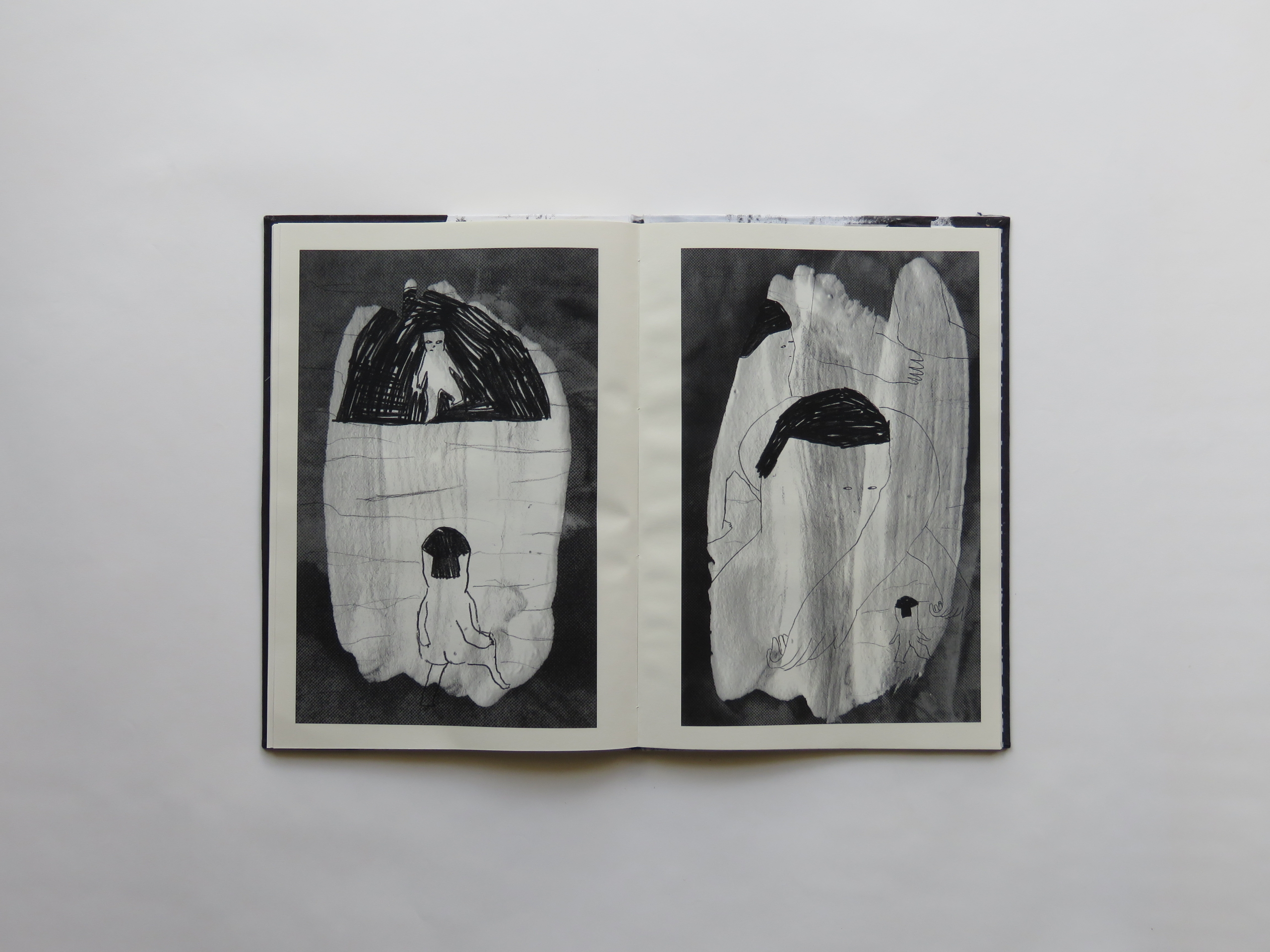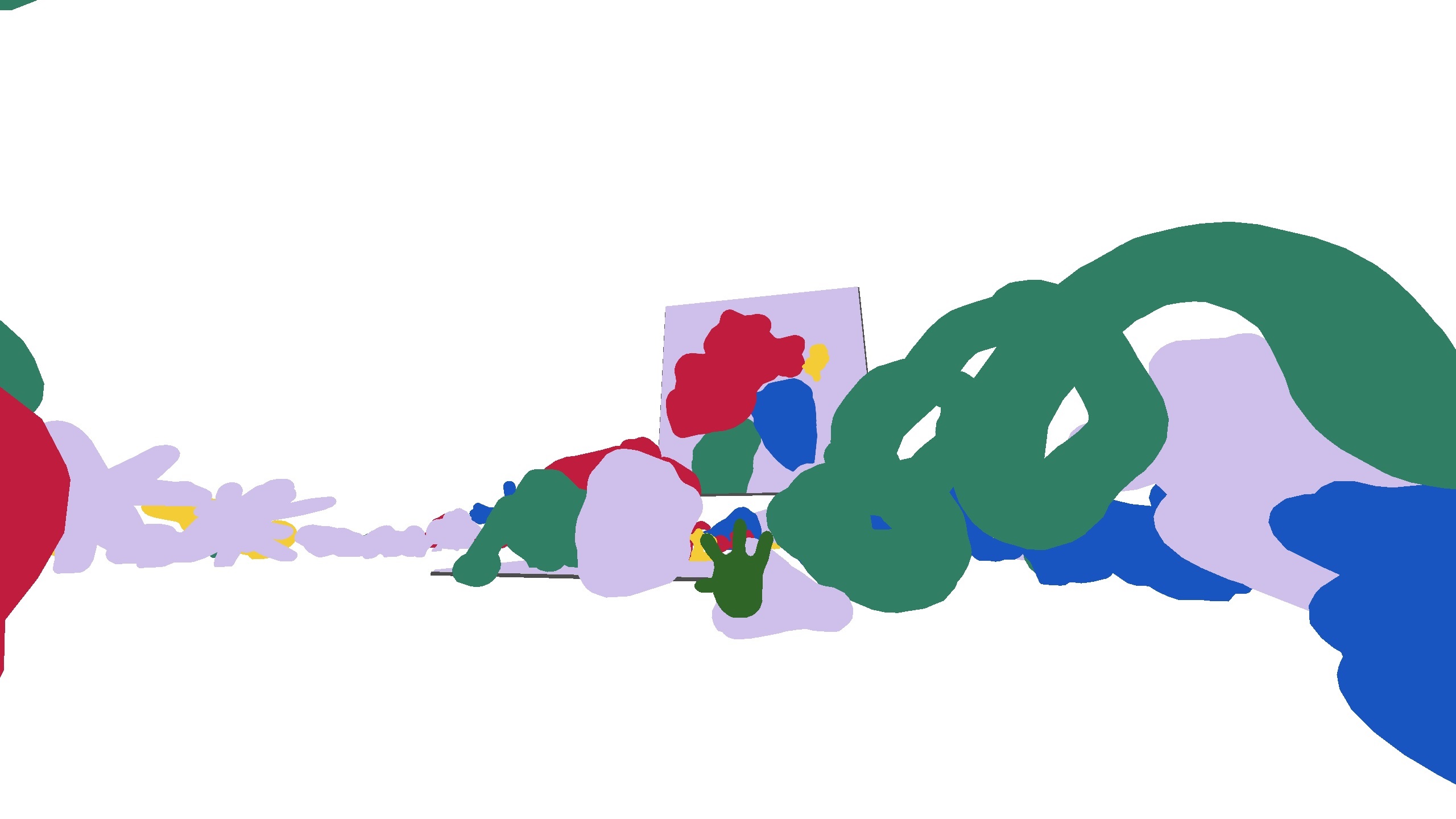
Taís Koshino is a noted Brazilian Nikkei artist with a varied array of skills and an equally diverse area of practice. Her journey began twelve years ago, upon rediscovering a childhood propensity for drawing. What followed might best be described as a whirlwind of activity. She reflects, “I started my artistic career in 2011. That was the year when I started drawing again and I published a zine and started an independent publishing house. Since then, I’ve been practicing drawing a lot, drawing every day.” In 2015, Koshino completed a BA in Social Communication with an emphasis on cinema, followed by an MA in Visual Arts at the University of Brasília. She has worked in animation and has held a series of residencies, branching out into digital art, interactive installations, and even artificial intelligence.
Taís is also a Nikkei Brazilian, an identity which informs her themes of borderlands and liminality. Her grandmother, Yasuko. immigrated from Gunma Prefecture in 1933, her grandfather from Osaka slightly later. Her grandmother’s family settled in the São Paulo countryside, and within two years, they owned their own property, which they farmed for cotton and subsistence allotments. During the Pacific War, they started producing silkworms. “That was the most vivid memory in her mind, because she had to feed the silkworms with mulberry leaves when she was young,” says Taís. While her grandmother was working in the city of Tupã in textile production, she met her future husband, who was then a truck driver for a Japanese cooking oil company. After a rough start in Paraná, the family sought opportunity in the new planned capital city of Brasília in 1967. In contrast to São Paulo, there was no Japanese community to speak of. Although Taís’s father had attended Japanese language school before arriving, he and his siblings found themselves bullied and alienated from their new peers. Taís muses, “now I can understand why, even as a Japanese family, we didn’t have many Japanese traditions […] In growing up, the only reference that I had to this heritage was in coming to my grandmother’s house. And she would cook for us some Japanese food.”
Her Nikkei heritage was, however, not destined to disappear. Following her first degree, it began gradually to emerge in Taís’s art. She says, “in 2016 I started reading, especially about Asian Brazilian feminism. Back then, there were groups on Facebook and people would share their story. But it wasn’t in my artistic practice yet.” In 2017, as Taís’s aging grandfather was living with her family, he subscribed to a Japanese-language newspaper which none in the family could read, not even himself, as his memory had begun to decline. As his family was unsure of how to cancel the subscription, the papers accumulated. Says Taís, “I just thought, ‘I have to do something with it.’ So, I started collecting the pictures [from] the articles. I made Ainda ontem (Still Yesterday), a comic that’s about this child who gets lost in this ritual of passage, and he gets lost in the memories. […] Because I was thinking about this idea of memory, and my grandparents were losing their memory and their capacity to think clearly. But it wasn’t yet related to my ancestry.”

The final piece of the puzzle would arrive in 2019, with an artist’s residency in Itoshima, Japan. Taís found herself “shocked” by the juxtaposition between her familiarity with certain cultural elements and her treatment by Japanese people as a relative outsider. She says, “I felt a disconnection, and also, I felt how Brazilian I am. It was a very powerful experience for me to realize that I’m in between both worlds.” That experience fed further work, in concert with exploration of new methodology. In 2020, based on her MA research, Taís created Jardim [Garden], an open-access digital simulation of Japanese rock garden creation. She made collages of the gardens sent to her by users, and in spring 2021, she minted many of her own digital gardens as Non-Fungible Tokens (NFTs).

In May 2023, Taís took the opportunity of a residency on the Past Wrongs, Future Choices project to develop further this confluence of memory, heritage, and digital culture. She says, “I put the challenge on myself not only to create a work with AI but to create this work from a model that I trained.” This installation, which involves projecting images within a silk parachute canopy, harkens back to her grandmother’s early memories and their connection to wartime industry. She also benefited from research collaboration with other artists and scholars on the residency, particularly Dr. Monica Okamoto, also of Brazil. Says Taís of her efforts, “When I do works that are related to my Japanese heritage, I go to traditional practice […] but I try to be subversive of it. I see it as a way that I can try to understand this heritage in my Brazilian context.”
This article was written by Aaron Stefik from an interview with Taís Koshino

 Instagram
Instagram